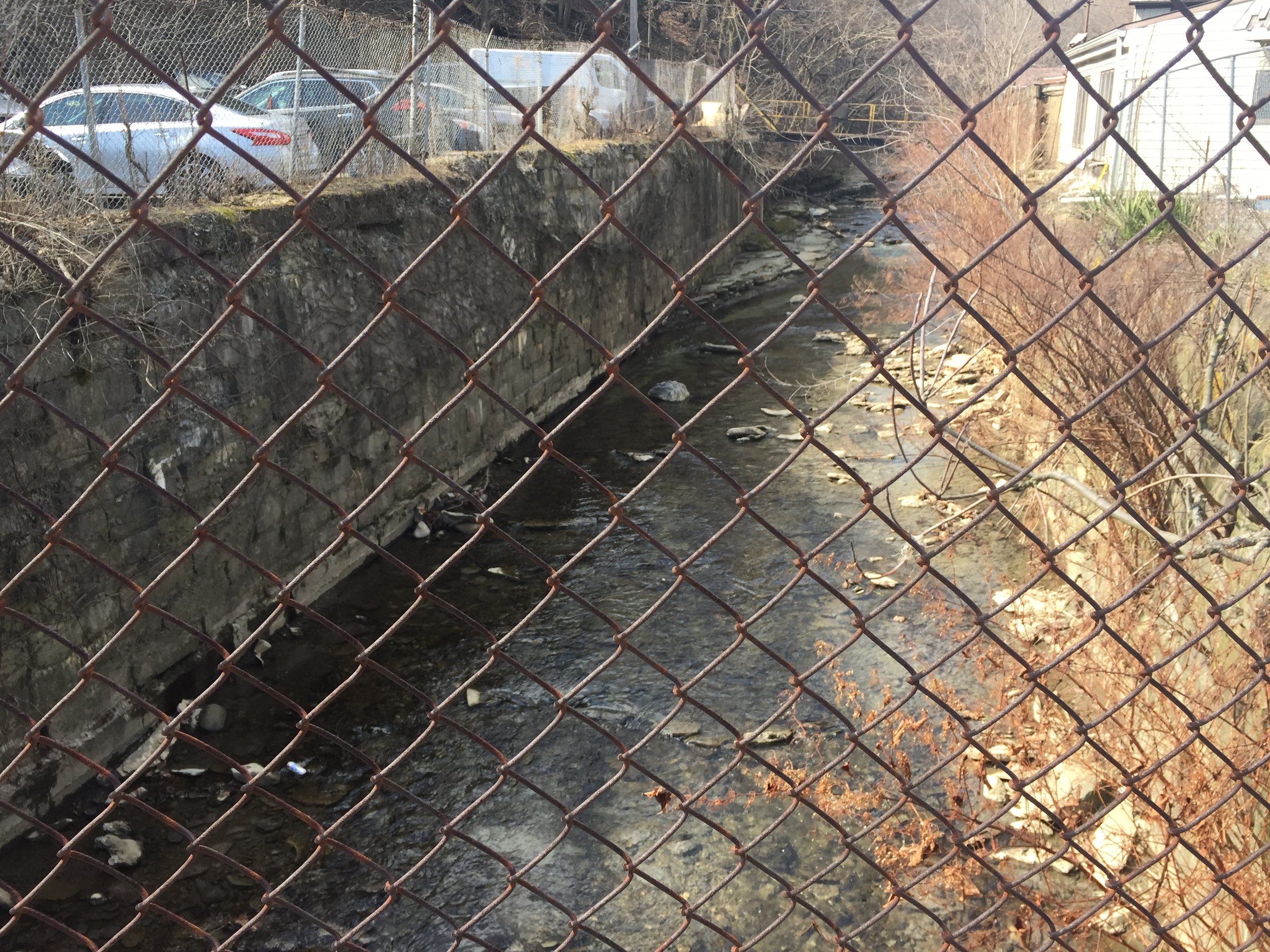Water is life.
When we search other planets for life, we first look for water. There have been movements to rename our planet Ocean since it is mostly covered in it. Agua is used in countless imagery around the world and throughout time. We never think about how much we use it until it is gone.
When I lived in the mountains a few of my peers argued that the three dams on the Skagit should be taken down. "The river is being held hostage." "We must break it of its chains." "Once free it could return to what it once was!" Being from coal country myself, I could never imagine someone thinking hydro-electricity has damaging. It is renewable! But yesterday I tasted just a bit of that feeling when I saw Girty's Run.
This is my watershed. Just past that bridge is the building I live in, and if I park my car around back I can hear it rushing along. But I have never touched that water.
Fences protect humans from falling in while stone walls are built up to channel during flooding. Should we protect human life? Of course! But should we do it at the expense of not only our connection, but local animal/plant connections to the source of life?
Not only that, but there was countless pieces of litter in there. Maybe someone tossed it over the fence. Maybe it flowed down from an upstream community.
Water is change.
Girty's run is named after Simon Girty, who was an early European settler to the area. Because he was taken in a Seneca raid and grew up with them, he was called the "White Savage," since we was a communicator between Seneca and Europeans.
Within the past few hundred years, this river saw a change from a few white men to an explosion of people. Change has happened rapidly and suddenly. But not all change is bad.
How many people can say their watershed has a Facebook Page?! Their cover photo shows a different side to GR: one full of life, inviting anyone to experience the stories it has to tell. There is still architecture there! Look at the banks. The rocks are wrapped to help prevent massive erosion, while also giving a stable place for plants to root. Once plants have taken hold, those nets won't be needed anymore. Those plants could also help with flood control; sucking up large amounts of water and being a living barrier to human property.
This year Millvale is 150 years old. Today lets start building, both in our archtecture and in our culture, what we want it look in the next 150.



